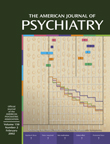“I don’t do upside,” John Horgan replied to a literary agent who wondered what the positive message at the end of this trenchant and mordant book would be so that readers “don’t go away depressed” (p. 10). Horgan is also the author of the bestseller
The End of Science (1,
2), which he calls “my gloomy tract” (p. 266). It focused cogently on the limitations of all science, not just neuroscience. Although stopping short of calling for the closing of the patent office, Horgan interviewed many older scientists who thought the important doable things had been done.
The Undiscovered Mind is not easy to ignore because of Horgan’s award-winning journalistic excellence, his access to everyone who is anyone as an interviewer for
Scientific American until 1997, and the synthetic intelligence of his arguments. Nor should we ignore it because, like William Styron’s beautiful but atypically misleading
Darkness Visible (3), it will be read by many more people than anything we psychiatrists write. Ideally, our residencies might devote some journal club sessions to Horgan as a provocative gadfly, but some very smart advisors should be provided to pull against his undertow.
Horgan inveighs against psychoanalysis, which he says persists only because of neuroscience’s explanatory gaps. He cites evidence that there is no psychotherapeutic expertise, comparing the equivalence of results of efficacy studies to the race run by the dodo in
Alice in Wonderland, in which “
everybody has won, and all must have prizes!” (p. 85), a postulation Horgan traces back to Rosenzweig in 1936
(4). Horgan meticulously documents his arguments with 63 pages of notes and references, and I do not do them justice in summarizing.
Discussing “Prozac and Other Placebos” (chapter 4), Horgan favors Fisher and Greenberg
(5), who suggested a null hypothesis of antidepressant efficacy, and Roger Brown’s urging of placebo trials
(6). He mentions Donald Klein’s “horror” about this, but the rebuttal of Quitkin et al.
(7) and the debate about placebo trials in the April 2000
Archives of General Psychiatry (8,
9) appeared after the book’s publication. Horgan cites so many negative findings and side effects for lithium and typical and atypical antipsychotics that no one reading this book would be likely to comply with treatment. Although he is clearly impressed with the “electroshock” (electrocortical treatment) suite and bearing of psychologist Harold Sackheim at New York State Psychiatric Institute, he reports that “fewer than eight out of 100 typical ECT recipients became well and stayed well without further intervention—even when treated at what may be the world’s most sophisticated shock therapy clinic” (p. 134). He adds, however, that “unlike [Peter] Breggin I believe that biological remedies can benefit some of the people some of the time, just as talk therapy can (even if the placebo effect accounts for most of the benefits)” (p. 134). Horgan then confesses his own “brush with depression” (p. 135) in college, which he believes was psychologically triggered and which he self-medicated with “copious amounts of alcohol and drugs” (p. 135). He says that if he became depressed again, he would “try psychotherapy first, and then antidepressants. If they didn’t work, and if my condition worsened, I might give the shock therapy expert Harold Sackheim a call” (p. 135). Horgan does not speculate whether listening to Prozac could produce less nihilistic books entitled
No End to Science or
The Discovered Mind. I have not recommended this book to patients because of its negative placebo value.
The rest of the book is concerned with rich, cutting-edge reports on “Gene-Whiz Science,” evolutionary psychology, artifical intelligence, and the basis for consciousness. Horgan concludes that gene therapy hasn’t worked in any trials to date, adroitly skewering the hyperbole of a number of leading geneticists and claims of specific genes for specific behavioral traits. He does not mention the promise of biotechnology’s race to decipher the proteome, the natural successor to the genome project, which is far more likely to lead to new drugs
(10). Horgan cites the worries of “left-leaning biologists” (p. 195) that Darwinian evolutionary psychology theory will lead to belief that the “unpleasant features of modern life—ruthless capitalism, racism, sexism, nationalism and the like—were to some extent probable and even inevitable outcomes of evolution” (p. 195). Segueing into artificial intelligence, Horgan is forced to admit that the great Herbert Simon (who died in February 2001) was prescient in his 1967 predictions of computer accomplishments, especially that “computer programs would play an increasingly important role in psychology” (p. 208). Horgan voices philosopher Hubert Dreyfus’s doubts about artificial intelligence that “mirrors the larger failure of psychotherapy to comprehend the mind” (p. 213).
Horgan’s access to notable interviewees and his attendance at major conferences approach omnipresence. His critiques of the “Who’s Freud/Whose Freud” conference on April 3–4, 1998, at Yale University (in which I participated) and the 1994 Tucson conference “Toward a Scientific Basis of Consciousness” (which I reviewed
[11]) are recognizable and fun. Horgan is at his best when he describes the exhibition hall at the APA annual meeting, with its “shrines” to various proprietary medications (pp. 103–104); the binding problem in models of the mind (which he dubs “The Humpty Dumpty dilemma” [p. 23]); and how confusion in the debates over modeling consciousness derives from differences in defining the concept.
Perhaps the most distinctive attribute of Horgan’s reporting is his snide descriptions of his interviewees. One is tempted to take schadenfreude (malicious pleasure) in reading about colleagues and other notables thus harpooned, and I know a colleague who bought the book for the “dish” alone. But the misanthropy (misiatropy?) begins to wear, although much of it is constructive. Even in the case of Dr. Sackheim, whom he appears to admire, Horgan describes a cartoon beside his door, in which a physician has been thrown from the window of a building labeled “Institute for the Study of Emotional Stress” and a word balloon from inside the building says, “Hey, I feel better already.”

